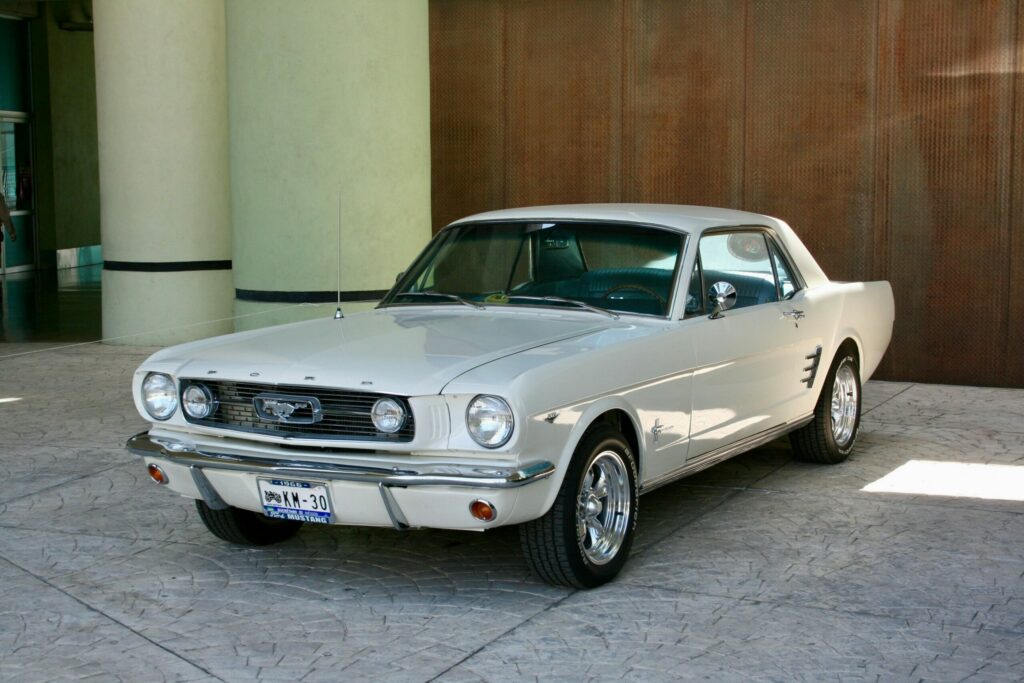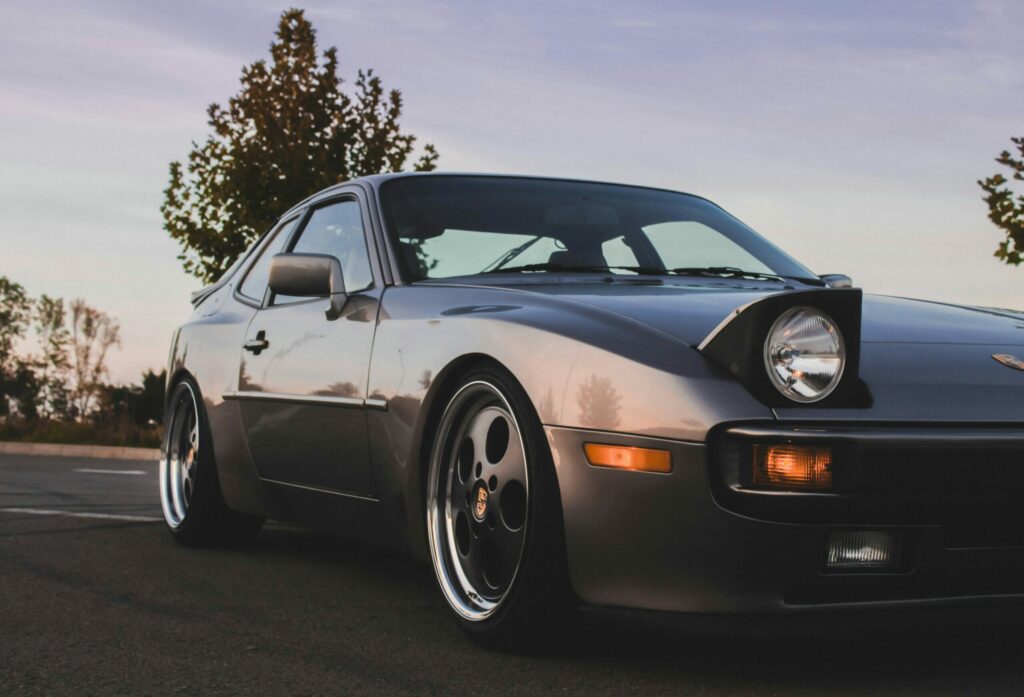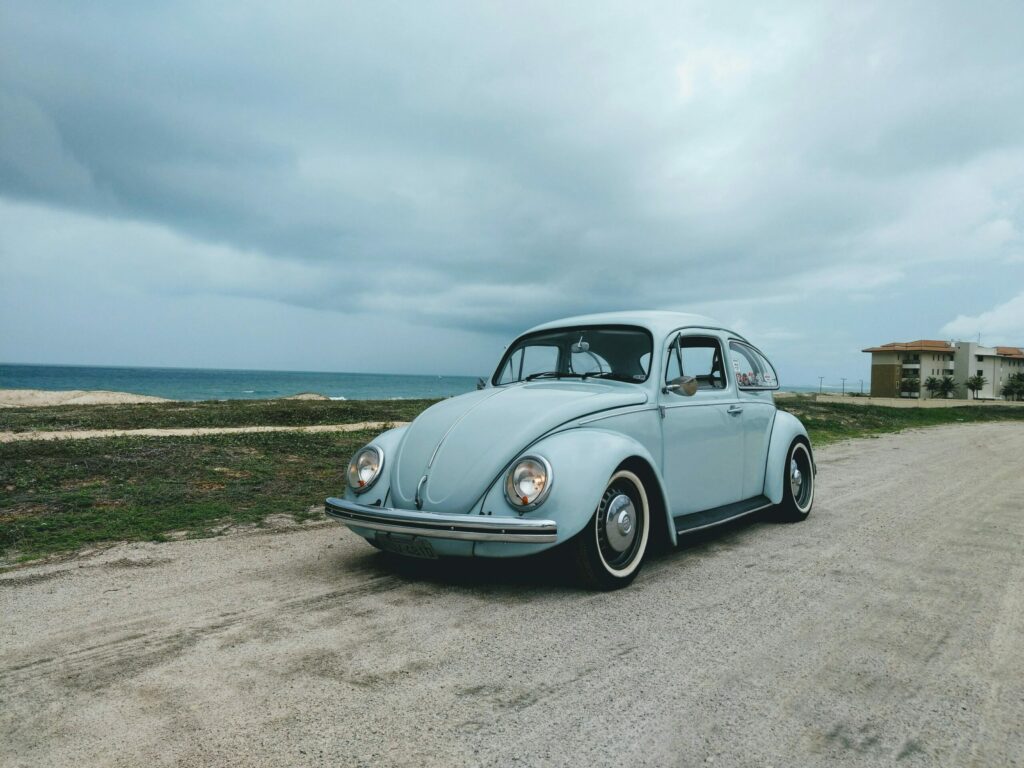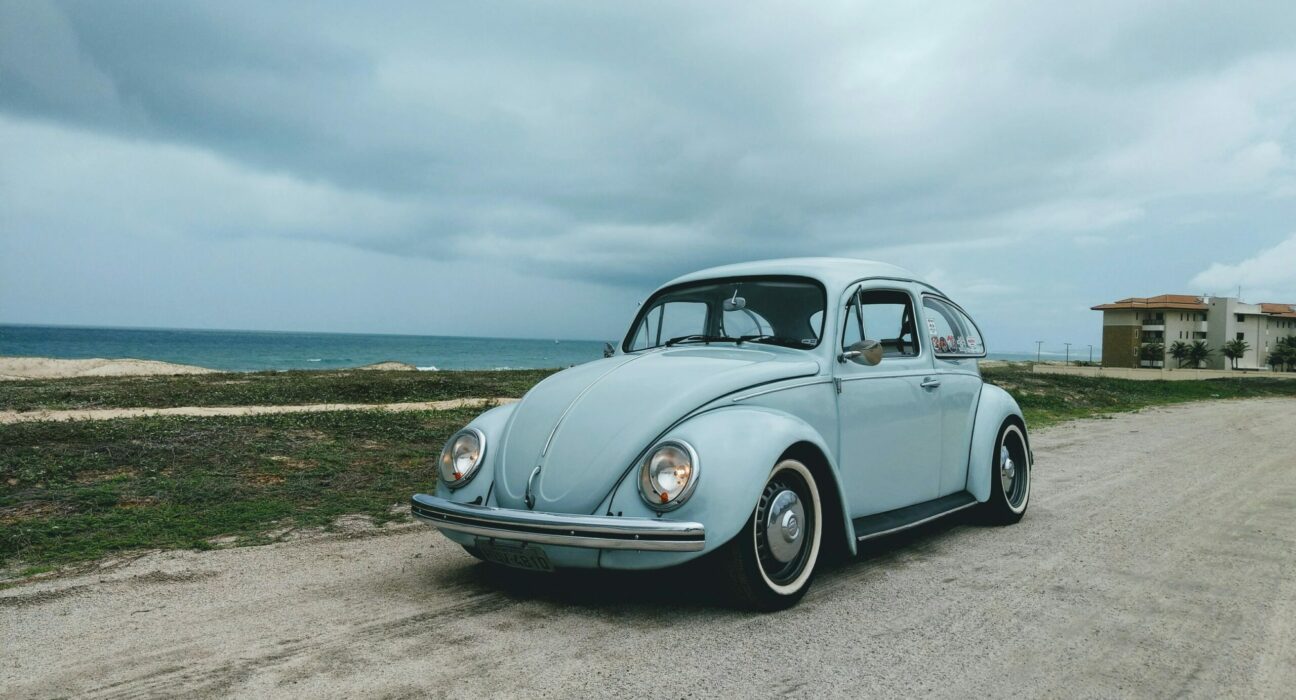Buying an affordable classic car can be more than just a trip down memory lane – it can also be a smart short-term investment. Many budget-friendly collector cars are beginning to appreciate in value, fueled by growing collector interest and nostalgic appeal. Below we highlight some of the investment-worthy vintage cars (a mix of American and European) that you can find for under $20,000. Each offers a blend of charm, heritage, and upside potential over the next 1–5 years.
Whether you’re after American muscle or European style, these classics combine relatively low entry prices with indications of rising demand or historically stable values. We’ve also considered practical factors like parts availability, maintenance, and reliability. Enjoy this listicle of promising classics, followed by a summary table of their country of origin, price range, and growth outlook.
1. 1965–1973 Ford Mustang (1st Gen) – USA

The first-generation Ford Mustang is the quintessential American pony car. It defined the muscle car era with an attainable blend of style and performance. Early Mustangs came with everything from an economical 120 hp inline-6 to a throaty 289 cu-in V8 (~225–271 hp in HiPo models), meaning there’s a spec for every enthusiast. While pristine Shelby GT350s fetch six figures, plenty of standard Mustangs (especially coupes) remain affordable classic cars well below $20K. In fact, Road & Track notes the 1971–73 Mach 1 can be found for under $40K, and more common trims often sell for far less.
Current Value: You can still find a decent late-1960s Mustang coupe in the ~$15,000–$20,000 range, with higher prices for convertibles and fastbacks. Investment Outlook: Demand is evergreen – the Mustang’s iconic status ensures value stability. Don’t expect a sudden spike in prices (many have already appreciated over decades), but values have been steady and inching upward as surviving examples in good condition become fewer. As a blue-chip classic, a well-kept Mustang should at least hold its value and likely appreciate modestly in the mid-term. Plus, parts and maintenance are easy, making it a practical entry into classic ownership.
2. 1979–1993 Ford Mustang (Fox-Body) – USA
Not all Mustangs to invest in are from the ‘60s. The Fox-body Mustang of the 1980s and early ’90s has emerged as a budget-friendly collector car with growing popularity among Gen X and millennial enthusiasts. These Mustangs offered 5.0-liter V8 power (making around 225 hp by the late ’80s) in a lighter, nimbler package than ‘60s muscle, and special editions like the ’87–93 GT and SVT Cobra are now genuinely collectible. The best part: they’ve long been cheap, but that’s changing. Hagerty data shows the median value for Fox-body Mustangs rose 21% over the past 5 years, reflecting a maturing market. Younger buyers who grew up with these cars are driving up demand, and even average models are appreciating.
Current Value: Fox-body Mustangs remain attainable – driver-quality cars often run $8,000–$15,000 (Hagerty’s median quoted value is about $9,400). Low-mileage, original V8 manuals in top shape can approach $20K. Investment Outlook: High. After being undervalued for years, these 5.0 Mustangs are finally getting respect. Quote activity is up and values are climbing steadily. As the 1980s nostalgia continues and older muscle car prices soar out of reach, expect clean Fox-bodies to continue their upward trend. They’re still affordable now, but likely not for long.
3. 1968–1982 Chevrolet Corvette (C3) – USA
When it comes to investment-worthy vintage cars, the third-generation Corvette (C3) is a strong contender. This classic American sports car, with its shark-like curves and burbling V8, has been overlooked for years – but not anymore. Early chrome-bumper C3s (1968–1972) packed serious performance (350–427 cu-in engines with up to 370 gross hp), while later ’70s models traded some power for iconic style and remained popular. Today, C3 Corvettes are still relatively affordable classic cars compared to older ’Vettes, but values are “gaining value nicely” and poised to climb higher soon. Enthusiast auction sources report that 1968–82 Corvettes “are rising in popularity” and make an appealing investment for the near future.
Current Value: Late-1970s Corvette coupes in good driving condition can often be found around $12,000–$18,000. Earlier C3s (1968–73) or rare versions (big blocks, special editions) cost more but can occasionally sneak under $20K in project or high-mile form. Investment Outlook: Moderate-High. The C3 is a “born collector’s car,” and historically Corvette values tend to rise steadily and level off rather than crash. With C1/C2 (1953–67) Corvettes now expensive, collectors are turning to C3s. Expect a gradual appreciation: as one auction insight put it, “C3 and C4 Corvettes… are going to begin pulling values much higher in a very short time”. In short, buying a C3 now could mean riding the wave as these Corvettes finally get their due.
4. 1977–1981 Pontiac Firebird Trans Am – USA
Thanks to pop culture and nostalgia, the late-1970s Pontiac Trans Am is revving up in the collector market. With starring roles in Smokey and the Bandit and Knight Rider, the Trans Am (especially in black-and-gold “Bandit” trim with the screaming hood bird) became an icon of ’70s cool. It backs up the image with a 6.6-liter V8 and T-tops for cruising. Despite its fame, the Trans Am remained surprisingly affordable – until recently. Now, interest in these second-generation F-body Pontiacs is rising, though you can still find nice examples under our $20K cap. In fact, many models still trade under $25,000 in spite of their popularity, making them a budget-friendly collector car that’s likely to appreciate as ’70s cars gain more fans.
Key Specs: 6.6 L Pontiac 400 or Olds 403 V8 (around 180–220 hp in late-’70s trim), RWD coupe with T-top option. Current Value: ~$15,000–$25,000 for a solid 1977–81 Trans Am; projects and less-desirable trims for less. Special editions (like the 1977 SE “Bandit” or rare 1979 10th Anniversary) command higher prices. Investment Outlook: Moderate. Values have begun to tick up – there are reports of late-’70s Trans Ams “rising fast in value,” especially the Bandit models. While not skyrocketing across the board, the combination of Hollywood nostalgia, limited supply of good originals, and the general rise of 1970s muscle cars point to continued appreciation. It’s a fun classic that should hold value well and likely see steady growth in the next few years.
5. 1968–1972 Chevrolet Chevelle (Malibu) – USA
The ’68–’72 Chevelle is a staple of American muscle, offering classic coke-bottle styling and big-block V8 power. As a GM A-body platform mate to the GTO and 442, the Chevelle has serious credentials – SS 396 and 454 versions boasted 325–450 hp in the late ’60s. While top-dog Chevelle SS values have climbed, you can still snag a base Malibu (or even a clone SS) within a $20K budget. Collector interest in these Chevelles has been increasing in recent years as enthusiasts who can’t afford a Hemi ’Cuda or LS6 Chevelle seek out more accessible muscle cars. The Chevelle’s sleek design, powerful engine options, and relative affordability make it an attractive classic investment.
Current Value: Rough or non-numbers-matching Chevelle coupes may sell in the $15,000 range, and even some decent driver-quality small-block Malibus fall under $20K. (Show-quality SS 454s are well beyond $20K, but those aren’t our focus here.) Investment Outlook: Moderate. As a highly recognizable muscle car, the Chevelle enjoys broad demand that should keep values strong. We’re seeing renewed popularity among collectors, which bodes well for short-term appreciation. Don’t expect bargain Chevelles to last forever – as alternative muscle (like mid-size Buicks, Oldsmobiles, and Chevys) gain traction, the value of clean Chevelles could trend upward at a healthy clip. Plus, parts and restoration support for these cars are excellent, lowering the risk of ownership.
6. 1975–1996 Jaguar XJS – UK
If American muscle isn’t your style, consider the Jaguar XJS, a long undervalued British grand tourer now finding favor among collectors. The XJS combined a 5.3-liter V12 (around 285–295 hp in most years) or smooth inline-six with a sleek, luxurious 2+2 coupe/convertible body. It was Jaguar’s flagship after the E-Type, yet for years you could buy one for used economy-car money. That’s changing: more buyers are recognizing the XJS as a taste of British luxury at an affordable price. Certain models have already spiked – Jaguar specialists note that late-model “Celebration” convertibles sold for “rocket money” recently – and attention may next turn to the stylish coupes. In short, the XJS is a sophisticated classic that’s finally getting its due respect.
Current Value: Many XJS remain bargains. Coupes from the ’80s can be found for $8,000–$12,000, and even nice V12 convertibles often list around $15,000. (Average U.S. pricing is roughly $12K to $20K depending on year/engine.) Investment Outlook: Moderate. The XJS market is starting to heat up as enthusiasts realize this is a classic Jaguar with increasing collectibility. Experts predict that certain desirable variants (e.g. late 4.0L six-cylinder manuals, special editions) could be “the next riser” in value. Generally, expect gradual appreciation: the XJS won’t skyrocket overnight, but the trajectory is upward. Its combination of exclusivity (a V12 grand tourer) and current low prices make it a smart buy now, with a reasonable chance of short-term value uptick as the pool of good examples shrinks.
7. 1982–1991 Porsche 944 – Germany

The Porsche 944 is a textbook example of an investment-worthy vintage car that’s still affordable – but perhaps not for long. This front-engine, rear-wheel-drive sports coupe was once the “cheap Porsche” in the shadow of the 911. It offers a balanced 50/50 weight distribution, a punchy 2.5L inline-four (143–208 hp depending on NA or Turbo), and classic ’80s styling. Over the past few years, collectors have started snapping up 944s, especially the Turbo and S2 models, driving prices north. In fact, while old 911s have long skyrocketed, “we are starting to see movement with the 944 also,” notes one market report. Notably, a decent 944 that might have cost $10K a decade ago can now fetch around $30K – and “the price is not going to slow down anytime soon.”
Current Value: Early 944 (naturally aspirated) models in good shape typically range from $12,000 to $18,000 as of now. The higher-performance 944 Turbo (217 hp) and rare 944 S2 can push closer to $20K (or above for excellent examples). Investment Outlook: High. The 944 has graduated from used sports car to recognized classic. As one analysis put it, collectors are increasingly seeing it as a “must own” classic Porsche. With Porsche’s brand cachet and finite supply, appreciation prospects are strong – evidenced by significant value jumps in recent years. Look for well-maintained 944s to continue appreciating, especially as the next generation of enthusiasts seeks out 1980s analog sports cars. Just be mindful of maintenance (timing belts, etc.), which can be pricey – factor that into your investment.
8. 1995–1999 BMW M3 (E36) – Germany
The E36 BMW M3 of the late ’90s is a modern classic on the rise. This second-generation M3 wasn’t always revered – enthusiasts once saw it as the “starter M car” that was mass-produced and not as exotic as the E30. But perspectives have changed: the E36’s crisp handling, high-revving inline-6 (240 hp in U.S. trim), and relative simplicity now attract “discerning connoisseurs” as 1990s nostalgia grows. According to Hemmings, all 1995–99 M3s are appreciating, and market data backs it up. Manuals average around $26K in sales, and even automatics (historically less coveted) are forecast to jump from about $19K to $30K on average. The best low-mileage cars have already shot past our price bracket, which is a clear signal: now’s the time to buy before they climb out of reach.
Key Specs: 3.0–3.2L inline-6 (240 hp US, up to 321 hp in Euro-spec), 5-speed manual or auto, well-balanced RWD coupe. Current Value: Higher-mileage or automatic E36 M3s can still be found around ~$15,000–$20,000. Clean manual coupes with moderate miles often run $25K+, but deals pop up in the high teens. Investment Outlook: High. The E36 M3 has firmly hit the “collectible” radar. With quote activity and values rising, analysts foresee a “noteworthy rise” especially for the remaining affordable examples. These cars are at the inflection point: enthusiasts who drove them in the ’00s are returning to find fewer nice M3s left (many were modified or thrashed). Expect well-kept E36 M3s to appreciate significantly over the next 1–5 years as the model transitions from used tuner car to respected classic. It’s a perfect example of an investment-worthy classic that’s still within reach — for now.
9. 1971–1989 Mercedes-Benz SL (R107) – Germany
For those seeking top-down European class, the R107 Mercedes SL is an excellent choice. Produced from 1971 to 1989, the R107 SL combines bank-vault Mercedes build quality with timeless styling – it’s the quintessential “old Mercedes roadster” seen in period films and TV. Engine options ranged from a 2.8L inline-6 up to a 5.6L V8 (the 560 SL, ~227 hp), all smooth rather than sporty. The R107 enjoyed a long production run, so supply is relatively plentiful, keeping prices reasonable. However, these SLs are increasingly sought-after classics that offer both usability and investment potential. Experts note that the R107 is “a sought-after classic… an excellent investment” in today’s market. The most desirable late-year models and those restored by marque specialists have started commanding premiums, hinting at an upward trend.
Current Value: The R107 is still budget-friendly. Nice driver-quality 380SL and 450SL models can often be found in the $12,000–$18,000 range. Even the flagship 560SL (1986–89) averages around $20K, with top-condition examples a bit higher. Investment Outlook: Moderate. This Merc likely won’t double in value overnight, but the trajectory is upward. The allure of the three-pointed star and the nostalgia factor (many remember this car from its 1970s–80s heyday) ensure steady demand. As the Trade Classics guide suggests, well-kept facelift (late-model) examples “will always be in demand,” and any SL with documented care is a good bet. Expect slow but steady appreciation as more enthusiasts decide they “need” a classic SL in the garage. In the meantime, you get to enjoy a very usable vintage car – parts are available and many mechanics know their way around these Mercedes.
10. 1938–1979 Volkswagen Beetle (Type 1) – Germany

No list of affordable classic cars is complete without the beloved Volkswagen Beetle. The Beetle (officially the VW Type 1) isn’t about speed or luxury – it’s about charm, simplicity, and an endearing design that remained largely unchanged for decades. With an air-cooled flat-4 engine (typically 1200–1600 cc, 25–60 hp) in the rear, the classic Beetle is slow but immensely fun and reliable. Importantly for investors, it’s a globally recognized icon with a massive fan base. Values for common Beetles have traditionally been stable, but nice examples have begun to inch up. According to Classic.com data, the average price for a Type 1 Beetle is around $18,700 in today’s market (across all years) – well within our budget. Rare early models (split windows, etc.) can fetch more, but the typical 1960s–70s Beetle remains a budget-friendly collector car that you can enjoy without breaking the bank.
Current Value: ~$10,000–$18,000 for a good condition 1960s or 1970s Beetle sedan; convertibles and pre-1967 classics may be on the higher end. Projects can be found for just a few thousand. Investment Outlook: Modest but Stable. The Beetle likely won’t appreciate as dramatically as some sports cars – it’s more of a sentimental pick. However, it has shown remarkable value stability over the years, and as fewer unmodified Beetles survive, the best ones are slowly rising in price. You’re also “buying smiles” – the Beetle’s enduring appeal means it will always attract admirers (and buyers) when it’s time to sell. As one reviewer joked, it’s not going to win any races (0–60 mph is leisurely at best), but for weekend cruises and car shows, this “lovable” vintage car delivers joy. That enjoyment, combined with slow-creeping appreciation, makes the Beetle a sound choice for an entry-level classic with investment upside.
Summary Table: Classic Cars Under $20K – Prices & Growth Potential
To recap, here is a summary of each recommended classic, including its origin, an estimated price range (in the current market for a solid example), and the short-to-mid term growth outlook:
| Classic Car (Year Range) | Country | Est. Price (USD) | Growth Outlook (1–5 yrs) |
|---|---|---|---|
| 1965–1973 Ford Mustang (1st Gen) | USA | $15K–$20K (coupe) | Stable to Moderate ⬆︎ (high demand) |
| 1979–1993 Ford Mustang (Fox-body) | USA | $8K–$15K (most GTs) | High ⬆︎ (values up ~21% recently) |
| 1968–1982 Chevy Corvette (C3) | USA | $12K–$18K (late C3) | Moderate ⬆︎ (undervalued, rising) |
| 1977–1981 Pontiac Trans Am | USA | $15K–$25K | Moderate ⬆︎ (growing nostalgia) |
| 1968–1972 Chevy Chevelle | USA | ~$15K–$20K | Moderate ⬆︎ (increasing interest) |
| 1975–1996 Jaguar XJS | UK | $10K–$15K (coupes) | Moderate ⬆︎ (undervalued classic) |
| 1982–1991 Porsche 944 | Germany | $12K–$18K (NA); <$25K (Turbo) | High ⬆︎ (strong appreciation) |
| 1995–1999 BMW M3 (E36) | Germany | $18K–$25K (avg today) | High ⬆︎ (accelerating demand) |
| 1971–1989 Mercedes-Benz SL (R107) | Germany | $12K–$20K | Steady ⬆︎ (slow appreciation) |
| 1938–1979 VW Beetle (Type 1) | Germany | $10K–$18K | Slow ⬆︎ (very stable, iconic) |
Each of these affordable classics offers a unique ownership experience – from rumbling V8 muscle to rev-happy German engineering – and each shows signs of being an investment-worthy buy. Remember that conditions, specs, and rarity can affect prices greatly, so do your homework on specific models. While no investment is guaranteed, these cars have the ingredients (enthusiast appeal, limited supply, historical significance) that point to growing values. In the meantime, you get to drive a slice of automotive history. Happy hunting, and enjoy the ride in your budget-friendly collector car!
Sources: References include recent market guides and analysis from Carrozzieri-Italiani.com, Hemmings, Hagerty, Classic.com/Yahoo Finance, and Trade Classics. Each source highlights the current values and trends indicating why these classics are poised for appreciation.





